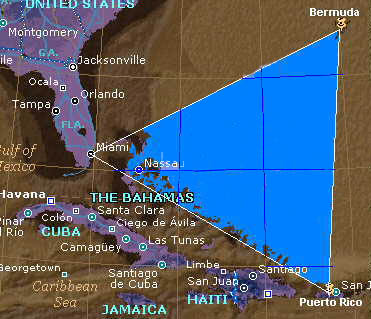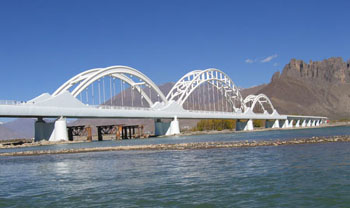With petroleum product prices rising steadily; diesel alone has become 25 per cent costlier over the last year. Apart from the search for alternatives, it is the need to achieve energy independence that is directing so much focus on biofuels and the crops that will help yield these oils. If sugar mills are being encouraged to produce ethanol from sugarcane for blending with petrol, efforts are on to cultivate such crops as jatropha and pongamia, which yield oil that can either be blended with diesel or used independently.
BIOFUELS, ethanol, jatropha, pongamia... Words till recently rarely mentioned outside a select circle are coming into common usage now. The reasons are not difficult to fathom: Petroleum product prices have been rising steadily; diesel alone has become 25 per cent costlier over the last year. Apart from the search for alternatives, it is the need to achieve energy independence that is directing so much focus on biofuels and the crops that will help yield these oils.
Sugar mills are being encouraged to produce ethanol from sugarcane for blending with petrol, while efforts are on to cultivate such crops as jatropha and pongamia, which yield oil that can either be blended with diesel or used by themselves instead.
Much potential
While jatropha has clearly emerged as the preferred option for cultivation, pongamia, a traditional species that has been around for ages, too has great potential. The advantage with jatropha, a bush, is that it is easy to maintain and starts yielding from the fourth year, while pongamia, a tree, requires more area and yields can be expected from the seventh or eighth year on. Scientists, however, say that the Botanical Survey of India has identified more than 400 species of plants and trees that can yield such oils.
According to Prof U. Shrinivasa, Department of Mechanical Engineering, Indian Institute of Science, Bangalore, pongamia oil has been found to be effective as a biofuel for running farm equipment and in power generation. Pongamia is cultivated for its nitrogen-fixing ability and its leaves are used as green manure. The oil from the seeds finds use in leather tanning and soap-making.
The enthusiasm for biofuels must also be viewed against the backdrop of the country's thirst for oil — about 114 million tonnes every year — 75 per cent of which is imported at a cost of Rs 1,20,000 crore. About 112 million tonnes of oil is consumed just by the transportation sector.
Experts feel that the problem of the huge oil import bill and the price uncertainty can be mitigated by cultivating biofuel crops on the over 60 million hectares of wasteland available in the country. Each hectare would yield up to three tonnes of seed, from which can be extracted one tonne of oil. This would translate to 30 million tonnes of oil.
The problem is that these estimates represent a theoretical potential, say the National Bank for Agriculture and Rural Development and commercial banks. Studies are still at the academic level and banks need large-scale field data before they will commit funds.
Even the economics of cultivating jatropha (see Tables below) and the unit cost analysis available with banks are based on preliminary estimates by research institutes. Banks are for now only willing to wait and watch and have not extended any loans for jatropha cultivation.
In Tamil Nadu, for example, State Bank of India has only entered into an agreement with a company that wants to start contract farming of jatropha.
Willing investors
Initial studies raise optimism and investors are willing to commit money to jatropha farming and in investing in processing facilities. The Indian Railways, the single largest user of fuel in the transportation sector, is considering an ambitious project in which it hopes to exploit the nearly 90,000 hectares available with it for farming biofuel crops such as jatropha.
These have the potential to solve about 50 per cent of the Railway's requirement. The problem the Railways faces is the inadequate availability of seeds for it to extract oil from.
It buys oils at a high cost — about Rs 43 a litre — mainly because it is still looking at it as a pilot project, according to Mr Jayantha Ghosh, Chief Mechanical Engineer, Southern Railway. But the Railway feels that prices should be much lower.
The Chennai-based D1 Mohan Bio Oils Ltd, which plans to invest Rs 80 crore in a biofuel project, is to set up a facility to process about 24,000 tonnes of jatropha seeds a year to produce about 8,000 tonnes of oil.
The plant is expected to come up in January 2006 in Chengalpattu, near Chennai, according to Mr D. Aristotle, General Manager (Projects).
The company hopes to rope in farmers through contract farming to cultivate jatropha on over 5 million hectares in 5-7 years.
It has launched the project in Tamil Nadu, where it plans to cover 40,000 hectares, Andhra Pradesh 20,000 hectares and Chattisgarh 50,000 hectares. It also plans to extend the cultivation to Rajasthan, Madhya Pradesh and Karnataka.
The company will buy back the jatropha seeds and provide technical support. The initial cost of Rs 28,500 a hectare will be disbursed as loan by banks over the first three years.
A Central Government subsidy of 30 per cent, or Rs 6,000 a hectare, will be adjusted in the loan. The company estimates that biodiesel prices will be marginally cheaper than diesel, at about Rs 30 a litre.
The chemical reaction
BIOFUEL production is a two-stage process that starts with the raw material, oilseeds, being crushed in oil mills to physically expel the oil, leaving behind the oil cake, which can be used as manure. The second stage is a chemical process involving a reaction called transesterification. The expelled oil is treated with an alcohol, say, methanol, and a base, say, potassium hydroxide, to convert it to fuel. This reaction removes free fatty acids and also gives off by-products glycerine and a fertiliser from the base used.
In the 1940s scientists used similar reaction to produce glycerine to make explosives.
Land equation
THE estimates of land area needed for extracting jatropha oil to replace diesel.
Under irrigated condition jatropha seeds output is 3 tonnes per hectare. This yields one tonne of oil.
Current diesel consumption: 40 million tonnes a year.
For equivalent jatropha oil, 40 million hectares would have to be brought under the crop.
Forty million hectares or four lakh sq km is the combined area of Chattisgarh (1.35 lakh sq km) and Madhya Pradesh (3.08 lakh sq km).
For 20 per cent blending of diesel with jatropha oil, that is, for 8 million tonnes, eight million hectares would need to be brought under the plant, or 80,000 sq km, which is 60 per cent of Tamil Nadu's land area (1.3 lakh sq km).
India has 6 lakh sq km of wasteland.
Read more...








 " border="0">
" border="0">


























